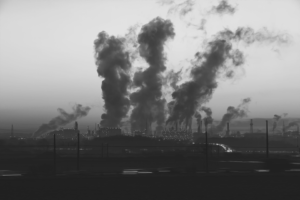Environmental Concerns
Building and construction industry professionals increasingly prioritize materials and products that minimize environmental impact in production and after disposal, which represent the most significant impacts for many building materials. They also consider the products’ health effects, seeking to reduce chemical exposures to humans and other living things during use.
Overview: Environmental & Health Issues
Comparing the impact of piping materials on buildings that are more sustainable and healthier for occupants requires careful gathering and analysis of data. Companies who are committed to driving innovation in this area are transparent, documenting the environmental and chemical impacts of their products and continually improving their processes. Here’s what we know today:
- Plastic is made almost exclusively from fossil fuels, using fracked natural gas as a major source. It then is refined into a variety of polymers with additives to manage performance, including many chemicals with negative health effects. At end of life, virtually all (95%+) plastics get landfilled or burned. To date, the plastics industry has published little data showing progress against its long-stated commitments to moving away from carbon-heavy sources, reducing chemical exposures, or increasing recycling.
- Copper mining and smelting have environmental impacts and making copper pipes requires significant energy. Copper is widely recycled, however, and has the ability to be reused without losing its malleability, resilience and stability. The industry has established a system to require improvements, called Copper Mark, that measures contributions toward the United Nations Sustainable Development Goals. In addition, exposure to low amounts of copper from piping has no health effects for most people.
- Iron mining has impacts similar to other metal production. Domestic foundries have committed significant resources to scrubbing air emissions and reducing water consumption, however, and industry data shows that iron and steel are one of the building industry’s most recycled materials. Cast-iron pipe produced in the U.S. comes almost entirely from recycled sources. As with copper, exposure to iron coming from pipes has no negative health impacts for most.
Related Articles

Industrial Plastic Production Raises Safety, Pollution Concerns
A number of serious accidents at plastic manufacturing plants – most recently in the Houston area — have threatened communities and contaminated the environment, bringing into question whether or not the plants’ ends justify their means:

Plastic’s Environmental Burden Covers Land, Sea, and Sky
Plastic is attacking our environment from all angles. As seen in Houston, the amount of harmful toxins being emitted into the air continues to grow in conjunction with the expanding plastic industry.
